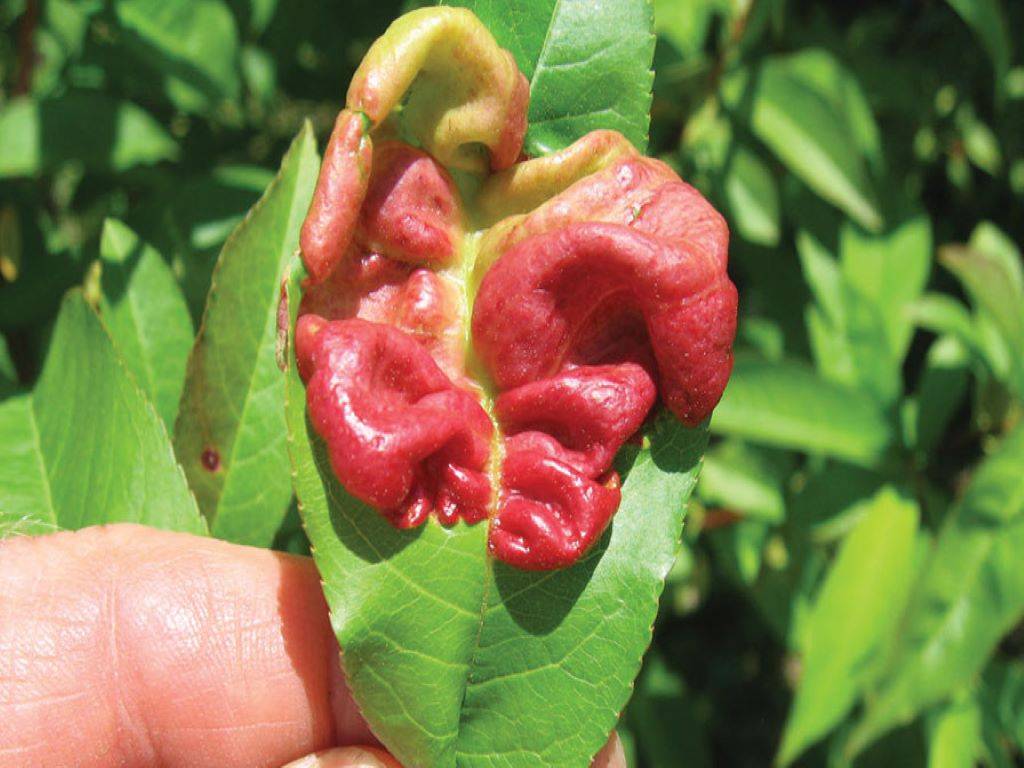
Leaf Curl disease is prevalent in a variety of crops and trees in India. Certain curl diseases are caused by a fungus, while some other are caused by various genomes of viruses.
Fungal Leaf Curl
Peach, almond, and nectarine trees show fungal leaf curl. The causative fungus is T. deformans. The fungus deforms young leaves and causes red blisters on them. Eventually, the fungus covers the leaf in the form of a whitish bloom. The “whiteness” is due to asci, which are spore-bearing sexual cells produced by ascomycete fungi. They penetrate the leaf cuticle.
A single ascus is made of 8 ascospores. They are ejected at the beginning of summer. These spores can survive winter on the plant surface. At the beginning of spring, if there is rain, it washes the spores into the buds. Once the spores enter the buds, no treatment works in this case.
So, the best way to control fungal leaf curl is to give treatment during winter before the spores reach the buds.
Viral Leaf Curl
Viral leaf curl in tomatoes and crops belonging to the Solanaceae family is caused by the virus genus Begomovirus. These are plant viruses featuring a wide range of hosts. They usually infect dicotyledonous plants. They produce significant damage to crops like tomatoes, cotton, cassava, beans, squash, and more. This leads to a lot of economic losses. At present, 424 species of this genus virus are known.
Cotton leaf curl disease is caused by CLCuD-complex of the begomovirus genus. This is widespread in India and Pakistan and maybe in nearby regions of South Asia. From these places, the virus has been transmitted to Philippines and China to ornamental plants. From these plants, as per reports, the virus has spread to cotton and Okra.
Chili leaf curl is a serious disease that can lead to 100% damage to crop in India. So is tomato leaf curl, which was first reported in 1948 from North India and 1950 from Central India. The disease can strike the plant at any stage. It can reduce the yield to a staggering 50% or an entire 100%. It is spread by whiteflies.
Leaf curl in beets and turnips is caused by Geminiviridae family of plant viruses. They are notorious for encoding their genetic information on the genome of single stranded DNA. This plant virus has, at present, 485 species.
Potato leafroll virus is from the genome Palerovirus. It belongs to the family Luteoviridae.
Common symptoms of leaf curl are:
-
Curling of leaves (in case of peach, it may cause scary-looking blisters)
-
Puckering of leaves
-
Stunting of leaves
-
Yellowing of leaf veins
-
Leaves staying small or become pale or deep yellow
-
Excessive branching
-
Extreme leaf distortion
-
Stunting of entire plant
-
Premature flower and fruit drop
Symptoms of leaf curl disease are complex. They vary with the genome of the virus and species of the plant.











